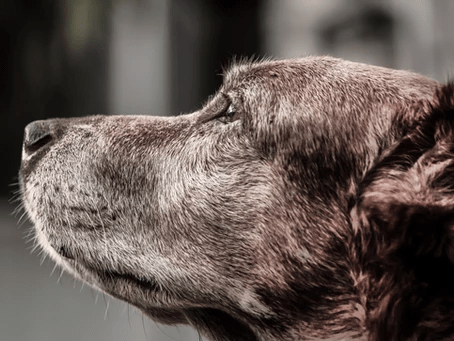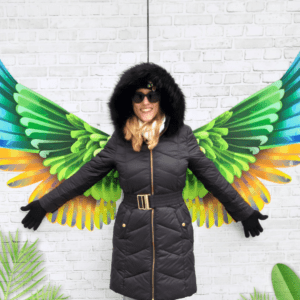I’m sure we’d all strive to do as much as we can to prolong our special time with our companion animals so we can enjoy their unconditional love as long as possible. As our furry family members get on in years, there are a few things we can implement in order to make life more comfortable for them and help them get a “good innings”. Here I’d like to share a few of my top tips with you on how to do this.
First thing would be to research the age at which your companion animal is considered a “senior” as it differs across species and even breeds. For example, it is said that the toy breeds like a Chihuahua might only be considered to be a senior at the age of about 10 or 11 years old, whereas the giant breeds like Great Danes reach it much earlier, around the ages of 6 or 7. These are just guidelines and it’s important to know that genetics, nutrition and environment also determine how quickly the animal ages. It’s the same in humans and really, there’s not much difference between us and animals.
1. Comfortable Bed
It really is important for our seniors to have somewhere comfortable to lay down and rest, especially since it’s normal for them to become a bit more lethargic and not as playful as in their youth. You want to give their joints as much care as possible so I suggest a good quality memory foam bed, but place several of these beds throughout your home so they always have somewhere comfortable to lay down no matter which room you’re in. I’ll add here that natural fabrics are better, especially for those animals with any sort of skin condition, so you can throw a lovely 100% cotton sheet over the bed/s. Dr Les Ellam of Achy Paw suggests sitting on your dog’s bed for half and hour as a test, and if your bum is numb then there’s not enough padding. It’s probably also a better idea to get a flat bed rather than one with a back and sides, as a dog with arthritis might find it a challenge to navigate through the opening.
2. Warmth
As they age, they feel the cold a bit more (think of your granny with a knee blanket) and this is mostly to do with the metabolism slowing down as a natural process. One thing you can do to help is to avoid clipping their coats in the winter months as this can specifically help the joints. Or at least don’t clip quite as short as the summer months so their natural coat can still provide some insulation. You can also make sure they have comfortable spots to lay in the sunny rooms of your home as this helps them get vitamin D as well. While I prefer for companion animals to be indoors with the family, I understand that some people cannot arrange this for various reasons and so make sure your senior has a dry spot to sleep in a covered outdoor space to shield from wind, while also providing sufficient blankets to cuddle into.
3. Joint Care
Many of our senior companion animals start showing the tell-tale signs of arthritis where the dogs maybe struggle on their walks or cats not being able to jump to their high up “hidey spots” anymore. There are a few things we can do for the joint care:
Turmeric is excellent for joints but I suggest Googling for “Golden Paste” recipes and dosage because you’ll need black pepper to allow the curcumin within the turmeric to be absorbed into the blood stream. If your animal has suffered from pancreatitis or colitis then perhaps look at a different way as Golden Paste usually contains an oil as a base, such as coconut oil, and you’d want to avoid that (however it’s really good for animals who can have it). You will also greatly help your senior’s joints by incorporating EDA & DHA into their diets and a good source that’s quick and easy is oily fish, such as tinned sardines or mackerel. The Relax HAOK9 Massage that I offer to clients can also help joints a great deal by keeping them lubricated and boosting circulation, among other benefits.
4. Sensory Enrichment
This is actually beneficial for all animals but when our seniors start losing some of their senses, like sight and hearing, we can focus on the remaining senses and stimulate them. One such was is to get animal-friendly house plants and I specifically suggest culinary herbs for the animals to smell (note that some house plants are toxic for animals and so please do your research). One of my senior dog clients absolutely loved having a sniff of a fresh mint plant and another dog client even had a little munch of my parsley (excellent self-selection). Another way to achieve sensory stimulation is through a Snuffly Ruffly mat, where you hide treats in the bits of material for the companion animals to sniff out and eat. There are a few companies out there producing these mats but I specifically recommend this one as I know that the producer has done incredible research even down to the fabric so that little threads don’t come off and get swallowed by the animals. They are also fully machine washable and used by the Principal of the Healing Animals Organisation:
5. Your Home
Just like humans, animals may start needing a little help with getting around and especially with stairs. You can build little half steps or a ramp for your dogs if the current ones are a little high to take in one step or they need help getting onto the couch or into the car. Please make sure that ramps are stable and have rubber grip so the dog doesn’t slip off as we don’t want injuries to occur. Contact me for tips on how to encourage your dog to use a ramp. Something that is also super important is to have carpets instead of wood, laminate or tiled floors. This is because our seniors can slip easily and need the carpet for grip so if need be, get some runners with the rubber mat underneath to secure them in place to put over your wood/tile floors. If your senior already has arthritis or hip issues, that last thing you want is for slippery floors to be putting strain on the animal’s joints.
6. Harnesses
I’m definitely an advocate for harnesses for all dogs instead of leads attached to a collar (to prevent thyroid damage etc), but did you know that you can get special harnesses to help dogs with mobility problems? They extend to go around the hips and have a handle so you essentially hold the hips up. This is great to help a senior dog stand up from a seated position, as well as in/out of cars and on walks. I heard someone say how sad they felt seeing a dog being walked slowly with one of these harnesses as the back legs didn’t move at all, however I pointed out how fabulous it was that the dog still got to go on walks and enjoy the outdoors as opposed to being cooped up inside. What a fabulous invention!
Animal Healing and massage greatly support our senior companion animals with their well-being, helping them to have a better quality of life. Contact me if you’d like to book a session and if you have any questions. I’m more than happy to take a look around your home to see what can be improved upon for your special furry friend.

#seniorpets #pets #companionanimal #animalhealing #animalreiki #caninemassage #dog #cat #petbed #animalcare



